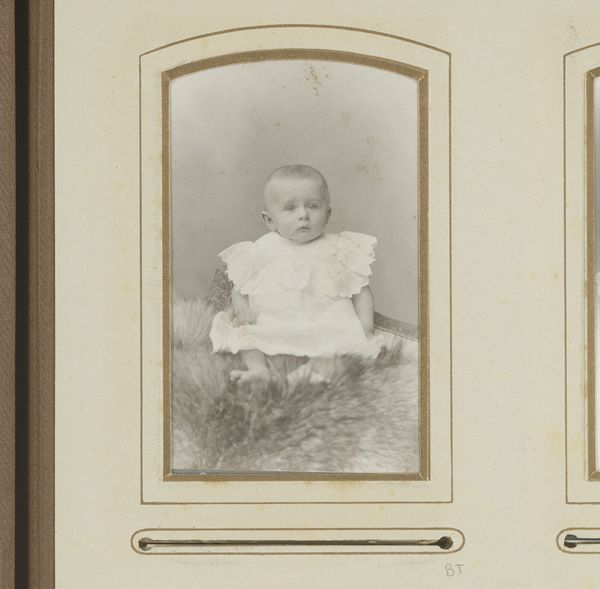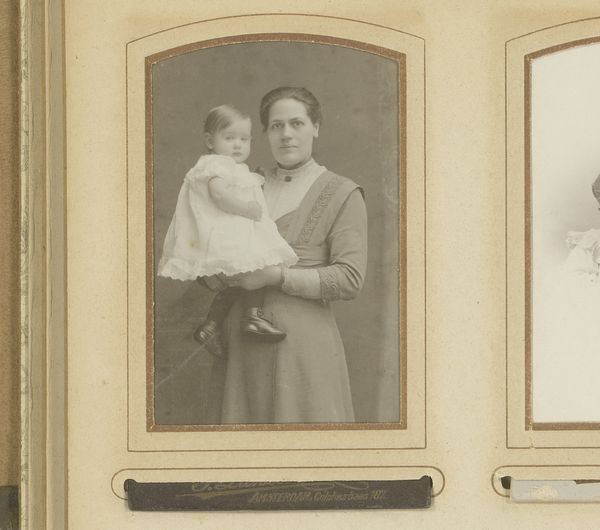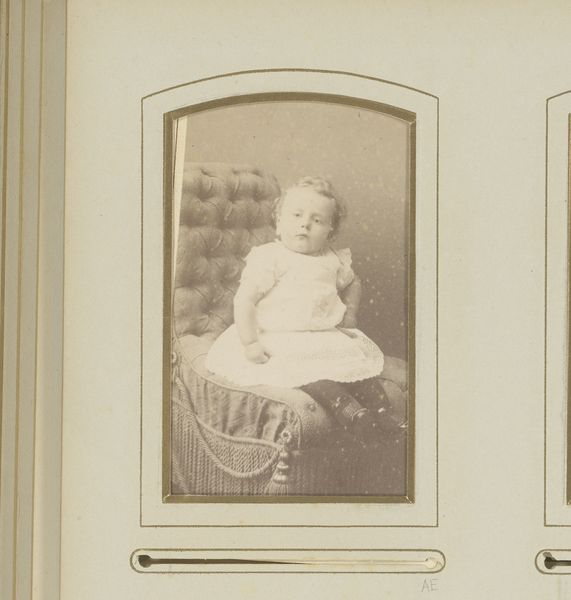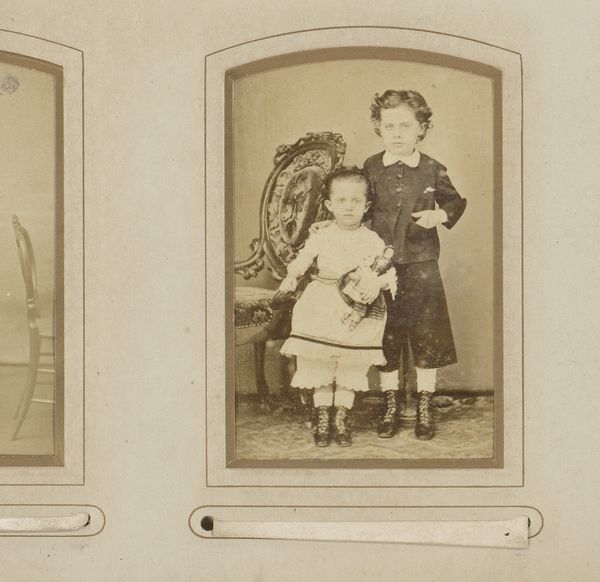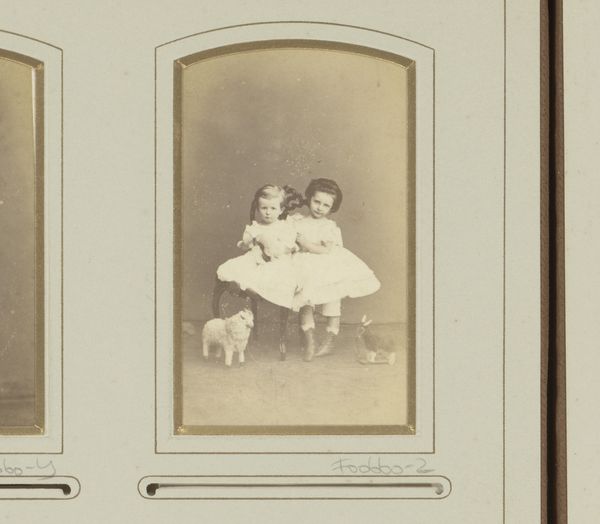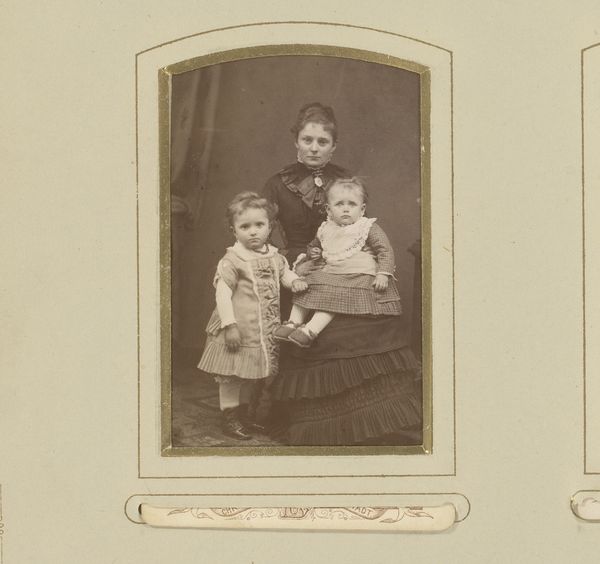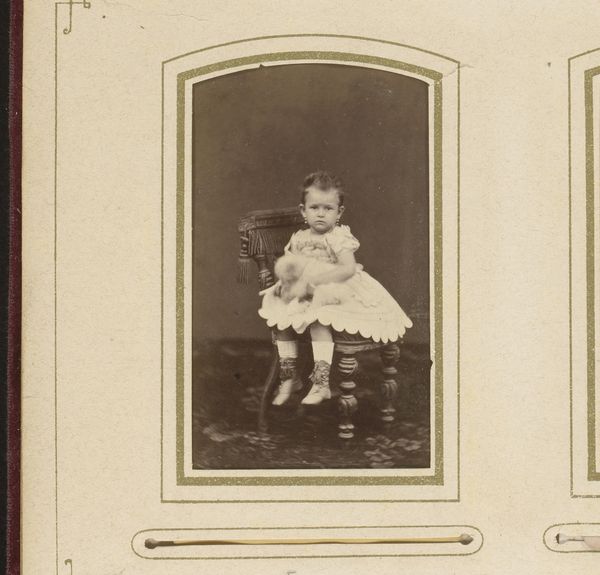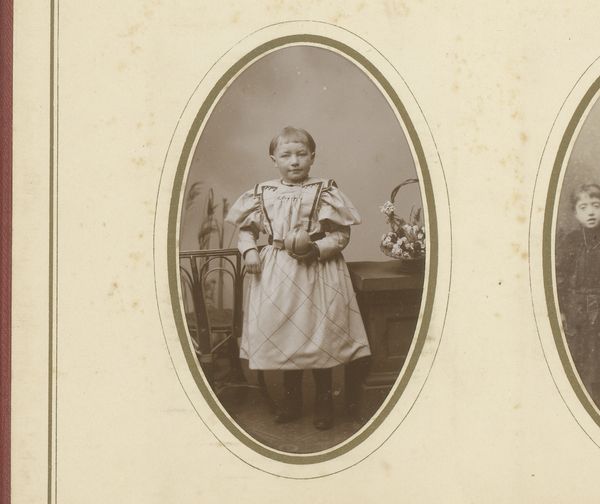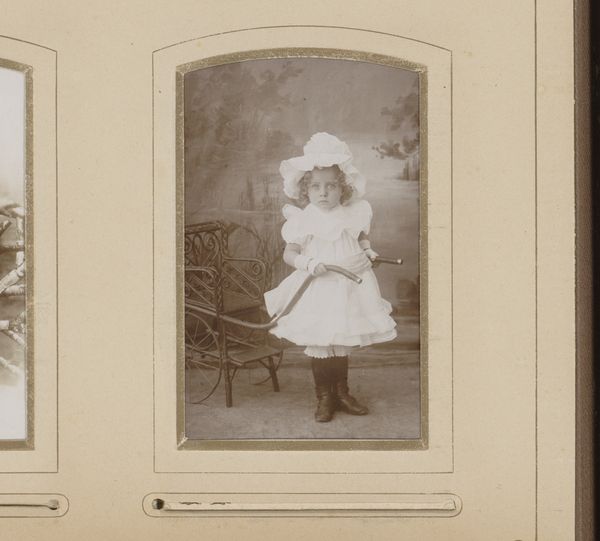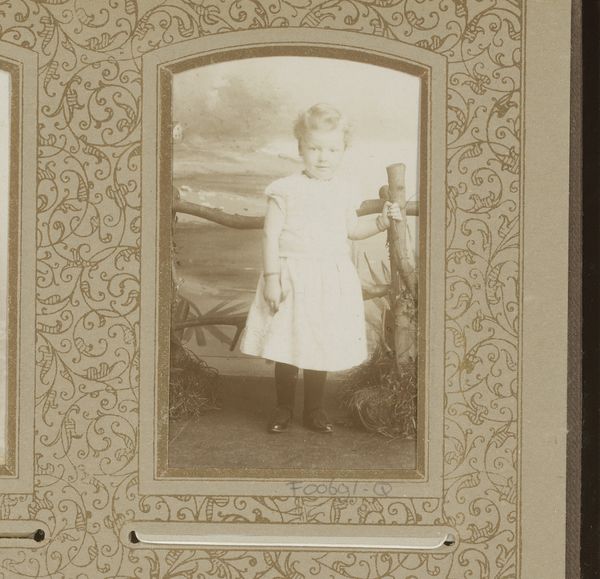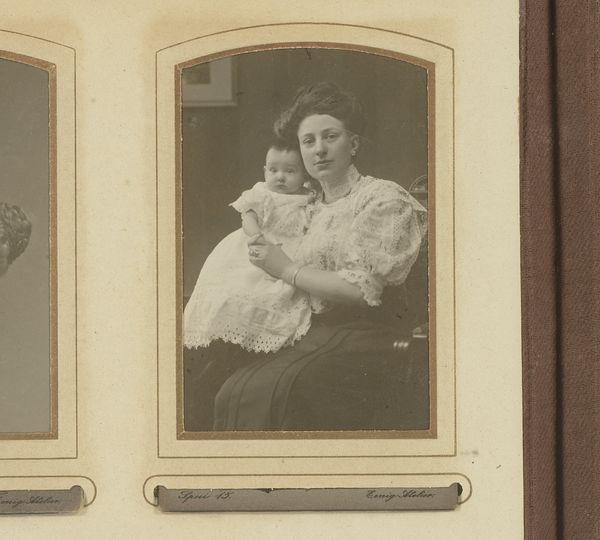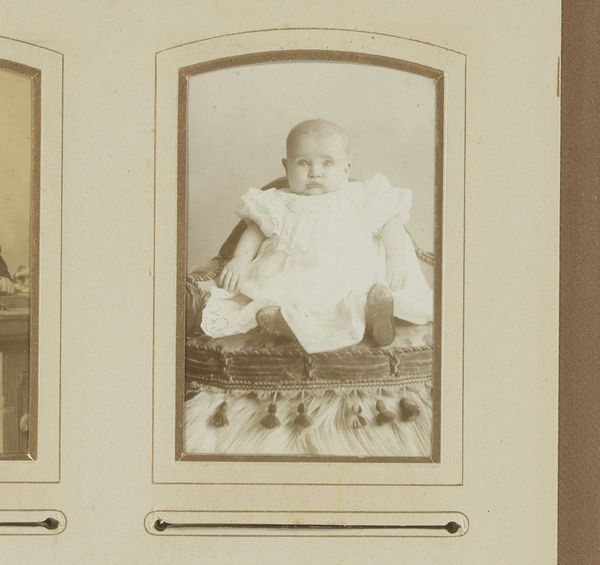
photography
#
beige
#
portrait
#
aged paper
#
mother
#
photo restoration
#
pictorialism
#
parchment
#
archive photography
#
photography
#
historical photography
#
brown and beige
#
yellow element
#
warm-toned
#
genre-painting
#
gold element
Dimensions: height 84 mm, width 53 mm
Copyright: Rijks Museum: Open Domain
Curator: This is a portrait of a woman with two children, captured sometime between 1891 and 1912 by Friedrich Carel Hisgen. Editor: It feels incredibly intimate, yet formal. There's a definite warmth in the sepia tones, but also a sense of almost melancholic stillness. It’s the composition that strikes me, the arrangement of the figures… it speaks of social conventions and, dare I say, burdens. Curator: That’s an interesting take. Considering the era, the image likely speaks to the socio-economic status of the family and the woman’s role. Photography at this time, whilst becoming more accessible, was still often reserved for marking important moments in a family's life, reflecting its standing within society. Editor: Right, the portrait session becomes a performance of societal expectations. You can sense it in the stiffness of their poses, especially the mother's. But I see a quiet defiance in her eyes, maybe even in the way she holds her children, particularly the baby who doesn’t seem too comfortable in that lacey garb! Curator: Indeed. The attention to detail in their clothing does reveal a certain affluence. Consider the pictorialist style of the photograph. These weren't mere snapshots, but carefully crafted compositions meant to evoke a mood and even an aesthetic ideal of motherhood and family. It echoes similar tropes found across various painting genres and media during the late 19th and early 20th centuries. Editor: And how the artist employs photography as a genre of its own… almost mimicking classical painting. What I keep circling back to is the almost palpable sense of constraint. While it is visually charming, what do you think about this depiction of motherly expectation versus lived experiences during this period? Curator: These carefully curated depictions of women and children in the past should serve as critical points to reflect on broader questions of the historical place of women in domestic life and labor; an area in which feminist artists and art historians have actively examined such constructions. Editor: Yes! Spotlighting how cultural norms are reinforced or subverted through art can teach us so much about progress and transformation! Thank you. Curator: Absolutely. Understanding these photographic portraits involves unraveling complex threads of social performance and the visual encoding of power structures, family, and expectations. It all begs continued reflection.
Comments
No comments
Be the first to comment and join the conversation on the ultimate creative platform.
